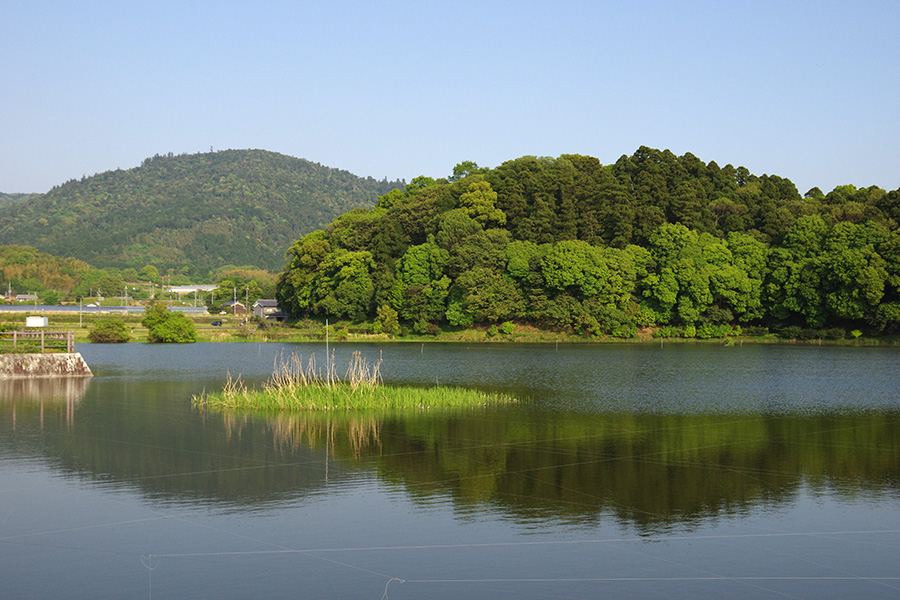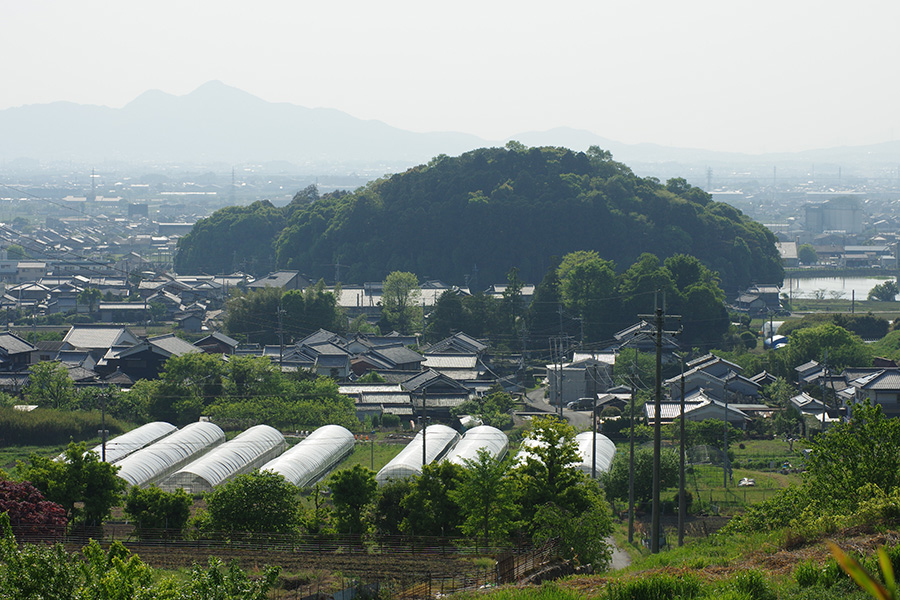
 |
| Hashihaka Kofun, a tumulus built in the middle 3rd century, and Mt. Miwa, the sanctuary of Ômiwa (Miwa) Shrine, in the background. |
After this Yamato-toto-hi-momo-so-bime no Mikoto became the wife of Oho-mono-nushi no Kami. This God, however, was never seen in the day-time, but came at night. Yamato-toto-hime no Mikoto said to her husband: — “As my Lord is never seen in the day-time, I am unable to view his august countenance distinctly; I beseech him therefore to delay a while, that in the morning I may look upon the majesty of his beauty.” The Great God answered and said: — “What thou sayst is clearly right. To-morrow morning I will enter thy toilet-case and stay there. I pray thee be not alarmed at my form.” Yamato-toto-hime no Mikoto wondered secretly in her heart at this. Waiting until daybreak, she looked into her toilet-case. There was there a beautiful little snake, of the length and thickness of the cord of a garment. Thereupon she was frightened, and uttered an exclamation. The Great God was ashamed, and changed suddenly into human form, spake to his wife, and said: — “Thou didst not contain thyself, but hast caused me shame: I will in my turn put thee to shame.” So treading the Great Void, he ascended to Mount Mimoro [Miwa]... Therefore the men of that time called her tomb the Hashi no haka [Hashihaka]. This tomb was made by men in the day-time, and by God at night. It was built of stones carried from Mount Oho-saka. Now the people standing close to each other passed the stones from hand to hand, and thus transported them from the mountain to the tomb. The men of that time mad a song about this saying: —
Nihongi translated by W. G. Aston, pp. 158-159. |
 |
| Hashihaka Kofun viewed from the foot of Mt. Miwa. |